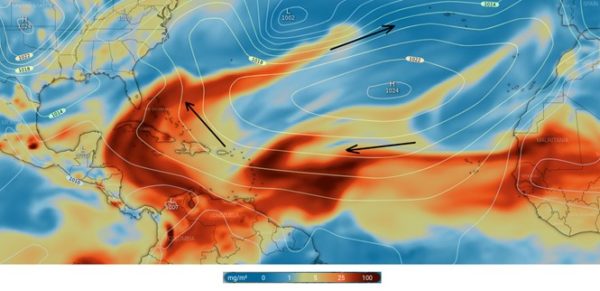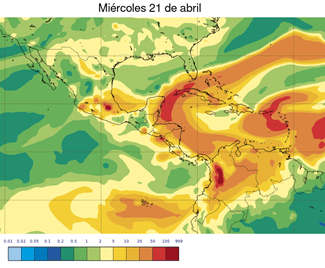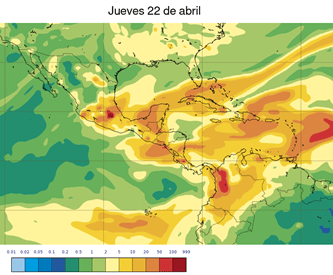Volcanic emissions from La Soufrière are affecting Cuba
and its neighboring waters
By Yanet Díaz
HAVANA TIMES – The La Soufrière volcano located on Saint Vincent and the Grenadines, an island in the lesser Antilles’ volcanic arc, has been erupting intermittently since April 9th, and has been emitting large quantities of gas and volcanic ash into the atmosphere.
While volcanic ash falls quickly near the volcano, volcanic plumes can travel great distances due to the circulation of air masses in the atmosphere’s main currents. The eruption column can also penetrate the entire atmosphere, reaching up to 20 km in altitude, due to a turbulent and constant mixing of air near the surface and air higher up.
Right now, sulfur dioxide (SO2) emissions, which are released with every volcanic eruption, have reached different areas of the Caribbean Sea, and even parts of South America, Europe and Africa. The predominant flow right now is being controlled by an anticyclone, located in the Atlantic Ocean (Diagram 1).
In anticyclone systems, winds flow in a clockwise direction, so the predominant flow is dragging high concentrations of SO2 throughout the periphery of the Anticyclone (see black arrows on Diagram 1), affecting Cuba and its neighboring waters, as well as other Caribbean islands.
The orange and red areas indicate concentrations of between 30-60 mg/m2 in the entire eruption column.

SO2 is an invisible gas to the human eye, and affects health via the respiratory tract, as well as causing a cough and shortness of breath. People with asthma or a similar respiratory condition are at a higher risk. Therefore, outdoor activities and any direct exposure to contaminated air should be reduced as a precaution.
Even though the highest concentrations of SO2 aren’t close to the Earth’s surface, the constant exchange process between different atmospheric levels can transport more contaminated air towards the surface; plus, when this gas joins with other substances, it can produce additional side effects, such as the formation of acid rain when it joins with water droplets.
The forecast indicates that the SO2 plume over Cuba will continue to be present on Wednesday April 21st (See Diagram 2), and will begin to fade on Thursday April 22nd. It’s worth mentioning that this forecast indicates total SO2 concentrations in the eruption column, and so surface level values will be lower.


In the meantime, scientists are closely following measurements of gas quantities being emitted by La Soufrière volcano, as well as to the other places it is being displaced to, which will be key in determining whether there will be any long-term consequences.
Sources: Copernicus Atmosphere Monitoring Service, Meteored, World Meteorological Organization, Advanced geospatial Data Management platform





